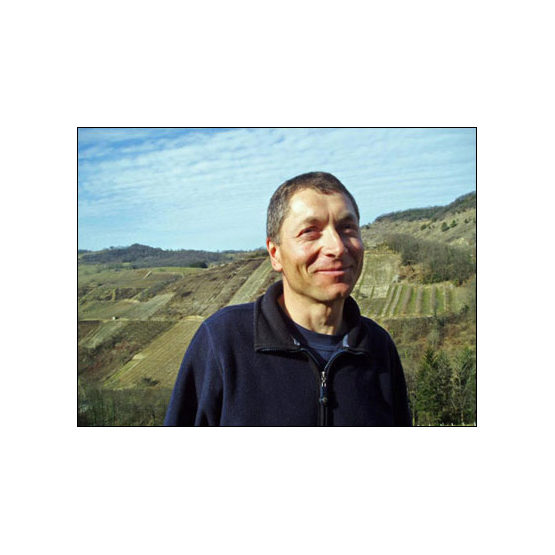
Domaine Rondeau
Marjorie and Bernard met in Bordeaux at university, where both were studying enology. Marjorie had grown up in Boyeux while Bernard, a native of the Loire, had grown up near Saumur. Marjorie's parents grew grapes, and produced small amounts of Cerdon, the eclectic local wine. Pink, sweet and with bubbles, it is indeed one of the more curious wines of France.
Bugey itself is not well known, even in France. Located midway between Lyon and the Swiss border, it is often lumped in as being part of two other isolated regions, the Savoie (which it is not) or the Savoie (of which it is also not). Bourg en Bresse, famous for it chicken (the delicious steel-blue footed chicken that has its own AOC) is about forty minutes away in a car. Bugey is a VDQS (Vin Delimitée Qualite Superieur) and not an AOC, and consequently overlooked by serious wine drinkers. After all, the laws in VDQS zones are not stringent as those in AOCs - - which always get more respect.
After the Rondeaus were married, they moved to Marjorie's property and began working with her parents. Shortly afterward they rewrote the financial structure of the domaine and renamed it Domaine Bernard et Marjorie Rondeau. In retrospect, the reason that I had such difficulty in finding the domaine in such a small place is because the older locals were unfamiliar with the Rondeau name — it certainly would have helped to know Marjorie's maiden name. Hell, in the backwoods of France, someone from 300 miles away may as well have come from Mars.
Right away, the Rondeaus began investing in new equipment for the chai: temperature-controlled tanks, automated descorgers, pressurized bottling machines, etc. All of the equipment had been completely overhauled by the year 2002, and the new wines coming out of the domaine under Bernard et Marjorie Rondeau's name began delighting both consumers and journalists alike.
So Cerdon de Bugey is sparkling, but how does it differ from other sparkling wines? In short, Cerdon is relatively sweet and is always pink. Its white wine world equivalents are perhaps Clairette de Die or Moscato d'Asti. Its red comparisons are perhaps Brachetto d'Acqui or Lambrusco. Cerdon, however, is normally made with either pure Gamay or a combination of Gamay and Poulsard grapes.
At Domaine Rondeau, the Cerdon is made with 100% Gamay, harvested by hand at optimum maturity. The grapes are brought to the winery, where the juice is extracted with a pneumatic press and led into stainless steel tanks. It is cooled briefly and the temperature is allowed to rise: the yeasts carried on the skins interact with the sugar of the grapes and fermentation begins. When the alcohol has reached about 7%, the tanks are cooled and fermentation is blocked. The wine passes through a light filtration that eliminates the large sediment and some of the yeasts, but quite a bit of residual sugar remains. The wine is bottled, and bottles are stored vertically in metal cages.
While the bottles are dormant, the yeast that has not been filtered out continues to interact with the sugar and create carbonic gas within the bottle. This is called the prise de mousse and, like in Champagne, will naturally cause the wine to have bubbles. The wine gains some further complexity as it ages (for a few weeks anyway). It is then discourged (like in Champagne, the yeast and sediment are ejected), a cork replaces the crown capsule, the label is attached and the wine is ready for to be sold and appreciated.
- Country:
- France
- Agricultural Standards: Sustainable